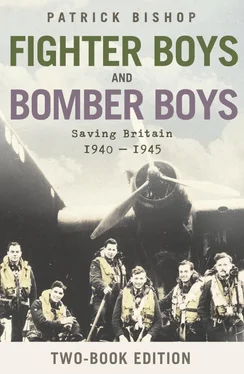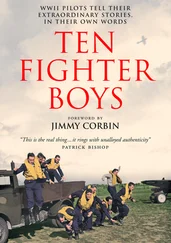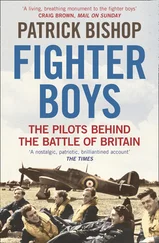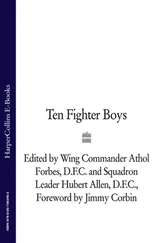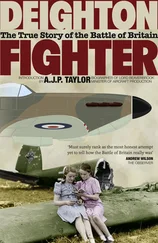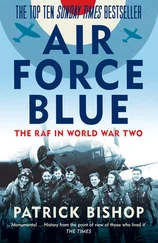The reserve offered an escape from dreary jobs in stifling offices. John Beard was working in the Midland Bank at Leamington when a circular arrived saying that employees who joined the VR would be granted an extra week’s holiday to allow them to train. Beard began flying at Ansley aerodrome at weekends and going to lectures in Coventry on navigation, meteorology and elementary engineering and aeronautics a few evenings a week. Ron Berry left school at sixteen and got a job as a clerk at an engineering works in Hull. He stayed eighteen months before moving on to the city treasurer’s department. Early in 1938 he saw an advertisement for the RAFVR in a local paper and realized how ‘keen I was to try something like that’. To prepare for the medical he ran round the local park every morning at seven o’clock. He was interviewed by an impressive squadron leader in a uniform displaying an Air Force Cross. ‘He made me feel strongly about doing something other than clerical work in the city treasurer’s office.’ 45
The RAFVR also gave young men a say in their own fate, a chance to choose which branch of the services they would be absorbed into before the inevitable seeming processes of conscription took the decision for them. In January 1939, Robert Foster was working at Shell headquarters in London. ‘I thought there was going to be a war and I didn’t particularly want to be in the army, or a conscript. I never really thought about the problems of being in the air force, but that seemed a better way to fight a war than as a common soldier.’ 46
The RAF seemed to offer a relatively clean way of fighting the coming war. Many of those who joined had fathers who had served in the First World War and whose experiences had left a strong and disturbing impression. Christopher Foxley-Norris, who was commissioned in the RAFVR after leaving the Oxford University Air Squadron, remembered that undergraduates, when ‘sitting around in the evening having a beer…used to discuss our ability to survive trench warfare. We’d all read All Quiet on the Western Front and those sort of things. My father was gassed at Loos in 1915. He died after the war in 1923, of cancer. I think most of us doubted we could stand it.’ 47
The expansion programme also brought an influx of new pilots – many originating from further up the social scale than the young men flocking to the RAFVR – into the Auxiliary Air Force (AAF) and University air squadrons buttressing Trenchard’s design for the air force. After February 1936 eight new auxiliary units were created and four existing special reserve squadrons were transferred to the AAF. By the beginning of 1939, fourteen squadrons, most of which had started out equipped with bombers, had been redesignated as fighter units, though the aeroplanes for them to fly were often slow in coming. By the time the great air battles began in July 1940, there were twelve auxiliary squadrons operating as day fighters and two as night fighters – a quarter of Fighter Command’s strength.
Among the new creations was 609 (West Riding) Squadron, formed in February 1936. Its first commanding officer was Harald Peake, an old-Etonian businessman from a local coal-owning family who had been chairman of large concerns like Lloyds Bank and London Assurance, and a keen amateur flier who took his private aeroplane on summer tours of the Continent. Peake had long been eager to raise auxiliary squadrons in the county when further units were required, and as soon as he was given the go-ahead began recruiting from among the sons of the big industrial and landowning families of Yorkshire. Stephen Beaumont, a junior partner in his family’s law firm, which had Peake as a client, was one of the first to join. He was a thoughtful and dutiful man with a strong social conscience. With Hitler’s arrival in power he felt a growing conviction that war was inevitable and he decided to fight in it as a pilot. He began flying at the West Riding Aero Club at Yeadon near Leeds, and when he heard that a new squadron was being formed, offered his services to Peake.
Beaumont found Peake ‘very capable. He was about thirty-seven and had held commissions in the Coldstream Guards at the end of the First World War and later in the Yorkshire Dragoons Yeomanry. Perhaps because of our professional relationship I was somewhat in his confidence. He wanted officers who were no more than twenty-five, of public-school and university backgrounds and unmarried.’ Beaumont was twenty-six and engaged to be married but was accepted none the less. Peake could afford to be choosy. By 8 June he had vetted 80 applications for commissions and 200 for posts as airmen. Despite this response, actual recruitment was slow, only speeding up as war approached. The squadron had a sprinkling of officers from aristocratic and county backgrounds. They included Peter Drummond-Hay, a textile executive who insisted on the use of both barrels of his Scottish name. He was discontented with his work in the cloth trade. Beaumont wrote that ‘he liked to give the impression that he would be better employed as the owner of a large country estate, where he would know all the county, and indeed in North Yorkshire he did know a great many of that section of society. Somewhat caustic about and dismissive of most Yorkshiremen, he was very courteous to women.’ 48Dudley Persse-Joynt was an oil executive from an old Anglo-Irish family, and the first auxiliary adjutant was the Earl of Lincoln, who later became the Duke of Newcastle. But most of the members came from families who had prospered in the reign of Victoria and whose wealth was founded on coal and cloth.
Philip Barran’s family were textile and coalmining magnates from Leeds. Joe Dawson’s father, Sir Benjamin Dawson, was a power in the cloth trade and a baronet. A later recruit, John Dundas, was related to two Yorkshire grandees, the Marquess of Zetland and Viscount Halifax, and was a cousin of Harald Peake. He was academically brilliant, winning scholarships to Stowe and Oxford and taking a first in modern history before going on to study at Heidelberg and the Sorbonne. He had joined the staff of the Yorkshire Post, specializing in foreign affairs, and was sent to report from Czechoslovakia at the time of Munich and accompanied Chamberlain and his own kinsman Halifax to Rome. Barran, always known as Pip, was stocky, boisterous, a rugby player, a trainee mining engineer and the manager of a brickworks owned by his mother’s family. His commanding officer eulogized him as ‘the very best type of AAF officer, a born leader who communicated his enthusiasm to others’. 49It was he who came up with the nicknames that adorned the members of 609 as they prepared for war.
The last auxiliary squadron to be formed was 616, which officially came into being on 1 November 1938 in Doncaster, South Yorkshire, as an offshoot of 609. Hugh Dundas had left Stowe in the summer of that year and was hoping to follow his brother John to Oxford. His father, however, insisted on him going into the law and he ended up being articled to a firm of Doncaster solicitors. Dundas applied to join 616 Squadron, but mysteriously failed the medical exam three times before finally being passed fit by an ex-Ireland rugby international RAF doctor after ‘the most perfunctory examination’, for which Nelsonian oversight he was eternally thankful.
Dundas finally joined in the last summer before the war. His CO was the Earl of Lincoln, who had moved on from 609, and other squadron members included Teddy St Aubyn, a Lincolnshire landowner who had moved into the AAF after being forced to resign his commission in the Grenadier Guards following his marriage to Nancy Meyrick, daughter of Kate ‘Ma’ Meyrick, who presided over the Forty-Three, a nightclub in between-the-wars London whose liveliness shaded into notoriety.
Читать дальше
